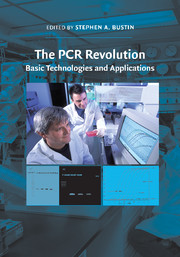Preface
Published online by Cambridge University Press: 25 January 2011
Summary
We live in an age in which hyperbole has become so pervasive that it is difficult to find apt expressions for something truly exceptional. Furthermore, impatience, haste, and short attention span seem to be added hallmarks of our times, inviting technological bandwagon effects that briefly promise the earth, but then cannot deliver because the technologies were either conceived in haste without proper regard for technical and biological concerns or are superseded by the next technological “revolution.”
The polymerase chain reaction (PCR) has been around a long time now: certainly as US Patent 4,683,202 since 1987, as a practical tool since 1985, and as a theoretical proposition since 1971. A Google search for “polymerase chain reaction” throws up more than 1.3 × 107 results, roughly the same number as a search for “monoclonal antibody,” the other wonder technology in the molecular arsenal. Its conceptual clarity, practical accessibility, and ubiquitous applicability have made PCR the defining technology of our molecular age, with a three-letter abbreviation as distinctive as that of deoxyribonucleic acid (DNA). It has even made it to Hollywood, where the re-creation of dinosaurs in Jurassic Park was accomplished using PCR technology. The concept is so perfectly simple that the elemental scheme remains unchanged since its inception: two oligonucleotide primers that define converging sequences on opposite strands of a DNA molecule, a DNA polymerase, dNTP building blocks, and a series of heating and cooling cycles.
- Type
- Chapter
- Information
- The PCR RevolutionBasic Technologies and Applications, pp. xiii - xviiiPublisher: Cambridge University PressPrint publication year: 2009

